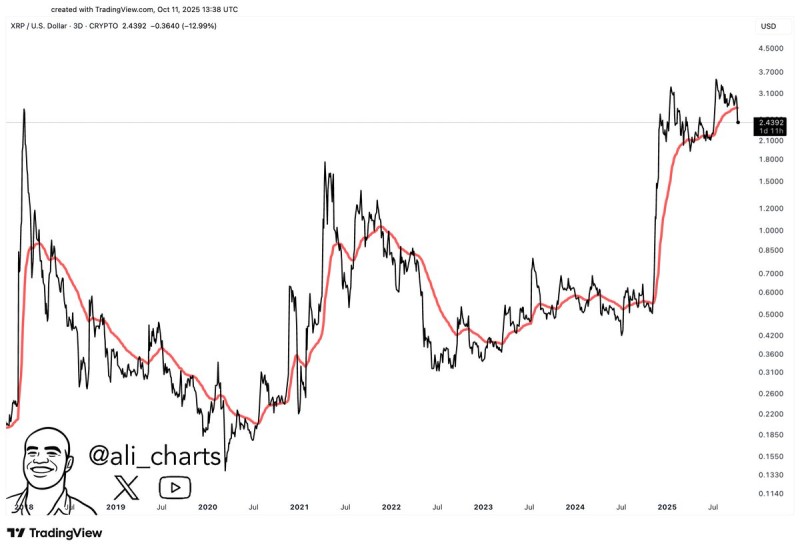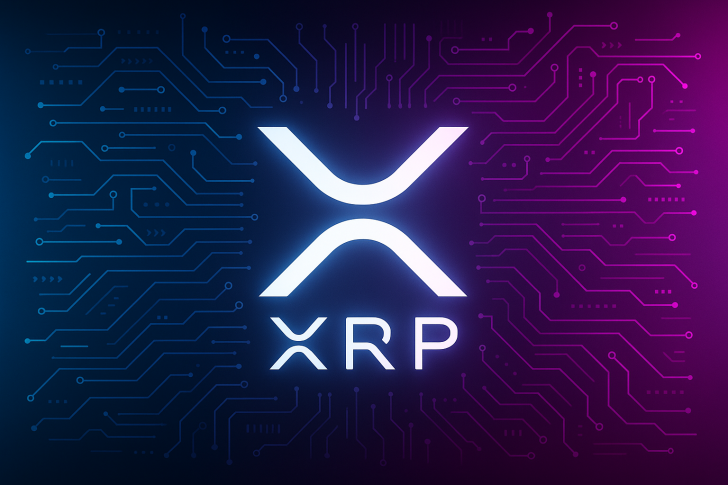XRP finds itself at another pivotal moment. This line has consistently shaped market sentiment — price action above it marks bullish phases, while moves below warn of bearish pressure. As XRP consolidates after its volatile 2025 rally, traders should watch this signal closely.
XRP's Critical Trendline Signal
Recent analysis from Ali points to one critical indicator: the red trendline.The chart presents a straightforward framework: above the red line equals bullish momentum, below it equals bearish pressure. XRP has historically respected this pattern, with breakouts above sparking strong rallies and breakdowns below preceding prolonged corrections.

Currently trading near $2.43 after a sharp 12.99% daily drop, XRP remains close to its red moving average line, keeping the bullish structure intact for now. In previous cycles, XRP saw explosive upward moves once it stabilized above the line, but suffered extended downturns when it lost this level. The price action shows consolidation after the powerful early-2025 rally, with market participants watching to see if momentum holds.
Several factors are shaping XRP's path forward. The regulatory climate, particularly ongoing developments around Ripple's U.S. legal battles, remains a major sentiment driver. The broader macro backdrop, including shifts in global risk appetite and crypto liquidity, is amplifying volatility. Technical volume patterns also matter — historically, large trendline tests coincided with spikes in trading activity, something traders are monitoring again.
Looking ahead, if XRP holds above the red line, a push back toward $3.00 is possible. However, a decisive break below could expose downside toward $2.00 and potentially trigger deeper corrections.
Conclusion
XRP's setup underscores the value of trend-following strategies. The red line highlighted by Ali continues to serve as a powerful guide for traders. In the near term, whether XRP sustains strength above this line will determine if the market prepares for another bullish leg — or faces renewed downside risk.
 Usman Salis
Usman Salis

 Usman Salis
Usman Salis


